Increase Awareness
The Human Body: What a Wonder!
The human body is the most extraordinary machine in the world. No other robot, no other machine even comes close to it.

Every second, every minute, without skipping a single beat, 24 hours a day, it irrigates, cleans, oxygenates and constructs.
At the service of life —our life, our body allows us to observe the birds flying overhead, to hear the first word of a child, to taste July’s strawberries, to smell the sweet scent of lilacs, to touch a lover’s skin and feel the rain on ours. It is the violin on which life sets its bow to allow us to dance, run, love, sleep and dream.
Its good health opens the door to all accomplishments, all desires and all aspirations. Let’s help it do so!
~ Geneviève Lefebvre, writer
A Healthy Body, What a Goal!
Laurent Duvervay-Tardif (doctor and professional football player) speaks about the importance of a healthy body.
Amazing Facts
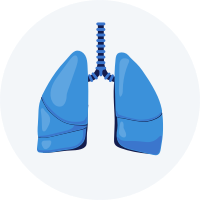
Our Lungs
- On the average, a person takes 20,000 breaths at rest per day, which means that we breathe at least 13,000 litres, or more than 15 kg of air each day!
- What makes our lungs efficient is the huge exchange surface between blood and air. This surface represents about 2.4 km of capillaries and red blood cells capable of each carrying 1 billion oxygen molecules!
- Our lungs exhale about a half litre of water a day.
- Seventy percent of waste is eliminated by our lungs simply by breathing.
- The lungs are the only organs in the human body capable of floating on water.
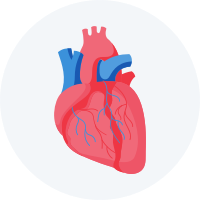
Our Heart
- The average heart is the size of an adult fist.
- Every day our heart beats about 100,000 times and pumps about 7,500 litres of blood.
- The five litres of blood in the body travel through 100,000 kilometres of blood vessels throughout the body every minute.
- A broken heart does exist. The symptoms are similar to those of a heart attack, but the cause is usually stress, not heart disease.
- Laughter is good for the heart. It reduces stress and stimulates the immune system.

Our Liver
- On average, the liver weighs 1.5 kg. In a man, it is about the size of a football!
- Not only is the liver the largest gland in the body, its role is also the most complex.
- The liver performs more than 500 essential functions.
- It contains 300 trillion specialized cells.
- It filters about 1.7 litres of blood per minute.
- The liver contains about 13% of the blood circulating in the body.
- It contains enough vitamin A to last approximately two years.
- The liver can regenerate! It can regain its full mass as long as 25% of it is healthy.
- The ancient Greeks may have known this fact, since in Greek mythology the gods punished Prometheus for giving humans fire by chaining him to a rock where a vulture devoured his liver. Each night his liver regenerated and the next day, his suffering would repeat itself—interesting, considering what we know about the liver today!
- For more on the liver: Canadian Liver Foundation | About the liver
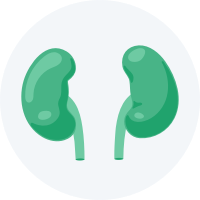
Our Kidneys
- An adult’s kidney weighs about 142 grams and is the size of a fist.
- The body's five litres of blood flow through the kidneys 36 times a day
- This means that every day, 180 litres of blood are filtered by our kidneys using a million filter units, called nephrons, that are found in each kidney.
- If the nephrons were stretched out from end to end, they would be about 8 kilometres long.
-
After the blood is cleansed, it returns to the body through the renal veins, producing an average of two litres of urine per day.
-
If a child is born without a kidney, the other one will grow and weigh the same as two kidneys together.
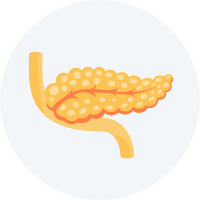
Our Pancreas
- The pancreas has four main parts: the head, neck, body, and tail.
- The word “pancreas” comes from the Greek and means “all flesh.”
- The pancreas has taste buds. This is how it knows how much insulin to release.
- After a pancreatectomy, a person will develop diabetes and they will have to take insulin for the rest of their life.
The pancreatic duct is a tiny tube that runs the length of the pancreas. It carries digestive juices to the duodenum. The ancient Greeks knew about the pancreas, but not its function or anatomy. In 1642, a German anatomist, Johann Georg Wirsung, discovered this duct after he dissected a man who had been hanged for murder. He named it the “duct of Wirsung” after himself. Wirsung was murdered the following year, allegedly over an argument over who had actually discovered the duct.

Our Intestins
- The surface area of the intestines would cover two tennis courts if they were laid out flat.
- The small intestine is about 6.7 to 7 metres long, but the large intestine is only about 1.5 metres long.
- The small intestine is the sole point of food and water absorption. Without it, you'd have to be fed through the blood.
- Your body can move your food through the digestive system even while you are standing on your head! This is because it works with muscles and is not connected to gravity,
- Leonardo Da Vinci believed the intestines helped us breathe.
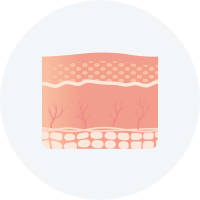
Tissus and other Parts of the Body
- The skin is the body’s largest organ.
- The cornea is the only part of the body that has no blood supply—it gets its oxygen directly from the air.
- A newborn baby has only about 0.2 litres of blood.
- If all the blood vessels in the human body were laid out end to end, they would circle the Earth four times.
Health is life’s treasure.